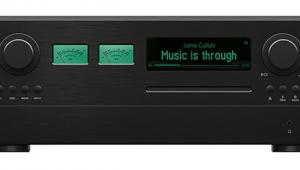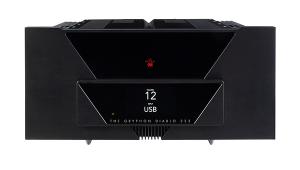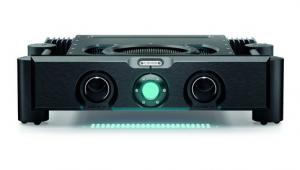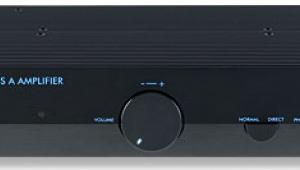Ferrograph F307 Mk2 (Vintage)
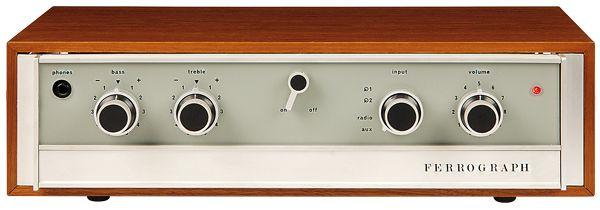
Having mastered this most difficult of components, it would have been relatively straightforward for Ferrograph to diversify into other lines. But its first integrated stereo amplifier is one of the most interesting. This 20W model was introduced in 1969; styled to match its Series 7 open-reel recorders, the F307 broadened the appeal of the Ferrograph range.
The amplifier offered a compelling package of near-professional build quality with styling that did not look out of place in a home environment. The circuit was conservative in its design, but offered a few points of technical interest – not least in its use of a field effect transistor (FET) in the first stage of the line level preamp.
An RIAA amplifier/equaliser for MM cartridges was built in with a range of selectable loading options. The F307 also offered tone controls and switched filters, the latter being set at 5kHz, 7kHz and 10kHz.
The power amplifier inside the F307 was conventional and ran from an unregulated single-rail 65V supply. The use of a single-rail supply mandated AC coupling to the loudspeakers via a 1050µF series capacitor. This low value and the high supply voltage both hint at the F307’s preference for 15ohm loudspeakers, although the amplifier is specified to work with speakers between 8-16ohm.
Some of the F307’s other design details were unusual at the time, eg, the main input selector switch is located at the rear of the chassis connected by an extension shaft. This minimises internal cable runs. Similarly, the mains transformer has a screened enclosure, which keeps the transformer’s magnetic field largely contained.
In 1973 a mk2 version of the F307 was released (as reviewed here) with a claimed reduction of harmonic distortion and an improved S/N ratio. Larger output transistors were fitted too.
Lacking in bass
Connecting the Ferrograph to modern equipment we encounter the old nuisance of small RCA connectors positioned too closely together to accommodate modern bulky plugs.
Loudspeaker connections are made via standard DIN sockets, so there are no problems here. Those for tape recording are at line level, although the outputs are not buffered – which is odd given Ferrograph’s expertise in this area.
Operation is straightforward, once you find the array of extra controls hidden under the hinge-down flap at the bottom of the fascia. One ergonomic shortcoming is that the treble, bass and volume controls have separate concentric sections for the L/R channels, which are not friction locked together.
It is difficult to criticise the Ferrograph’s bass, not because it’s perfect but because there isn’t really any! There seemed to be at least an octave missing from the bottom end, irrespective of volume settings and the CD being played.
This robbed Chris Isaak’s ‘Wicked Game’ [Reprise] of warmth and glow, and while this lack of bass meant that some usually obscured detail in the guitar strumming and percussion was now revealed in all its glory, it was clear the track’s essential character was changed.
This, to us, is the F307’s major flaw. The situation may well improve with the use of higher impedance loudspeakers, but with our Monitor Audio PL100s the sound proved a bit too lean and dry.
On the other hand, vocal clarity on the Chris Isaak’s track, and a number of other vocal-led recordings like ‘Don’t Marry Her’ from Blue Is The Colour [Go! Discs] was excellent and the sound was neat and well-ordered. What the F307 does, it certainly does well.
Overall, the F307 mk2 sounded brisk and airy, The upper midrange is forward and the treble sounds a trifle clipped. But this makes sense given the likely sources and loudspeakers the unit would have been partnered with.
Verdict
The Ferrograph F307 mk2 earns a reserved recommendation for its purposeful character and excellent quality of construction. It’s slightly fiddly to operate or match to other components, but its well marshalled, vocal-orientated sound will have bags of appeal.
Originally published in the 2014 Yearbook





